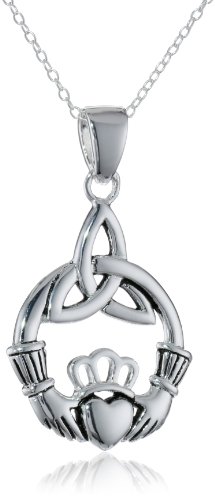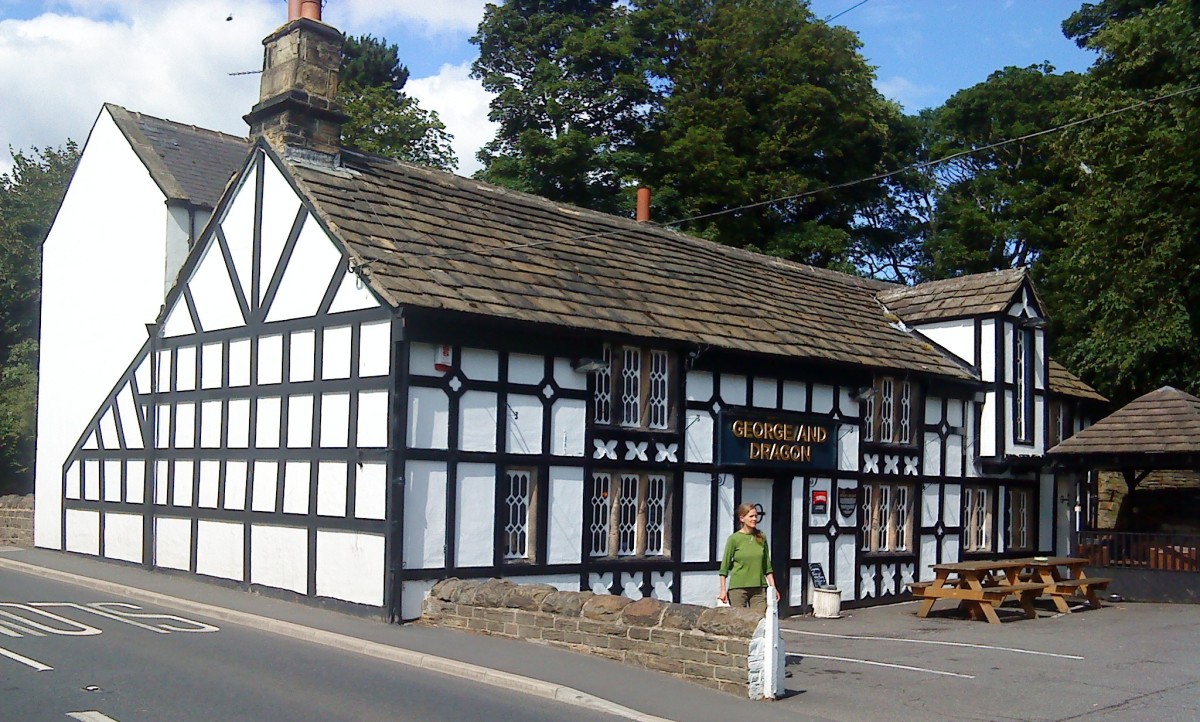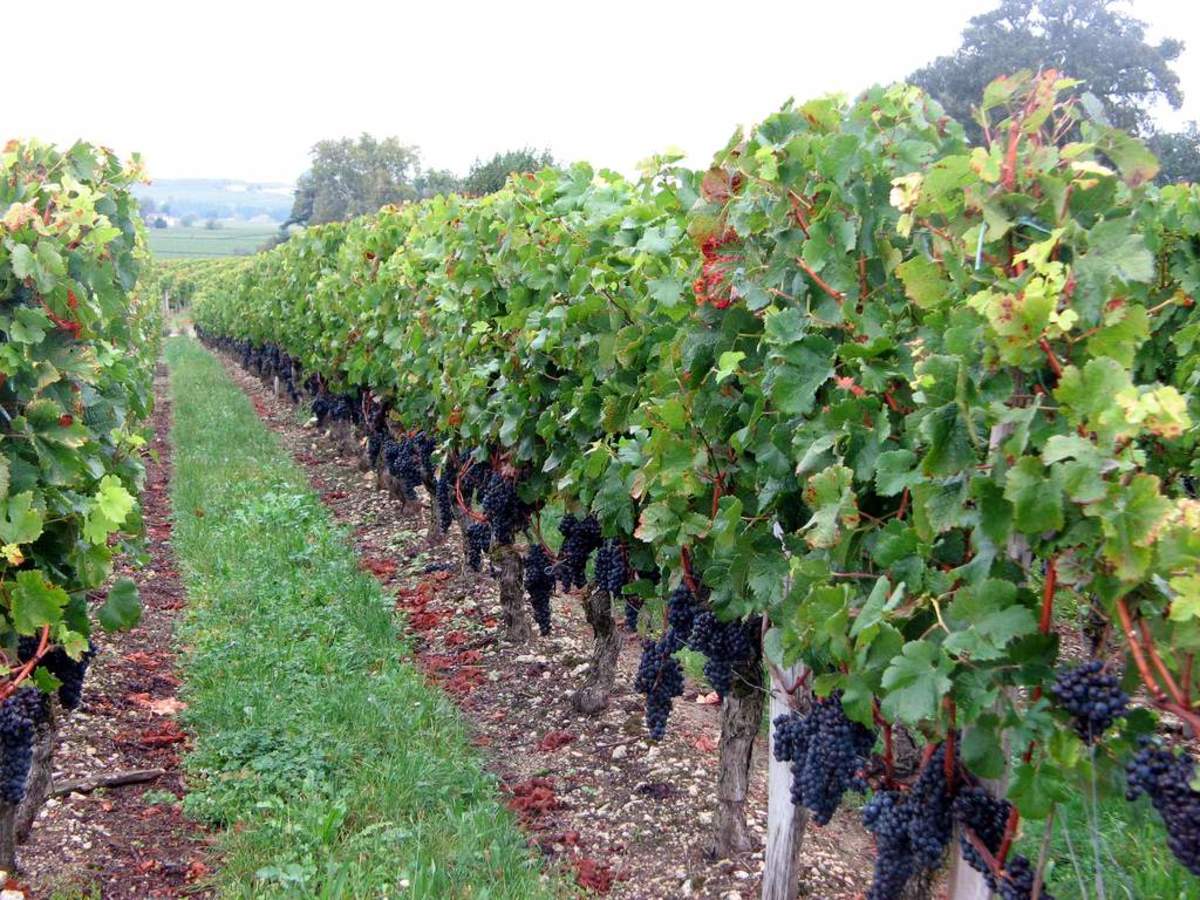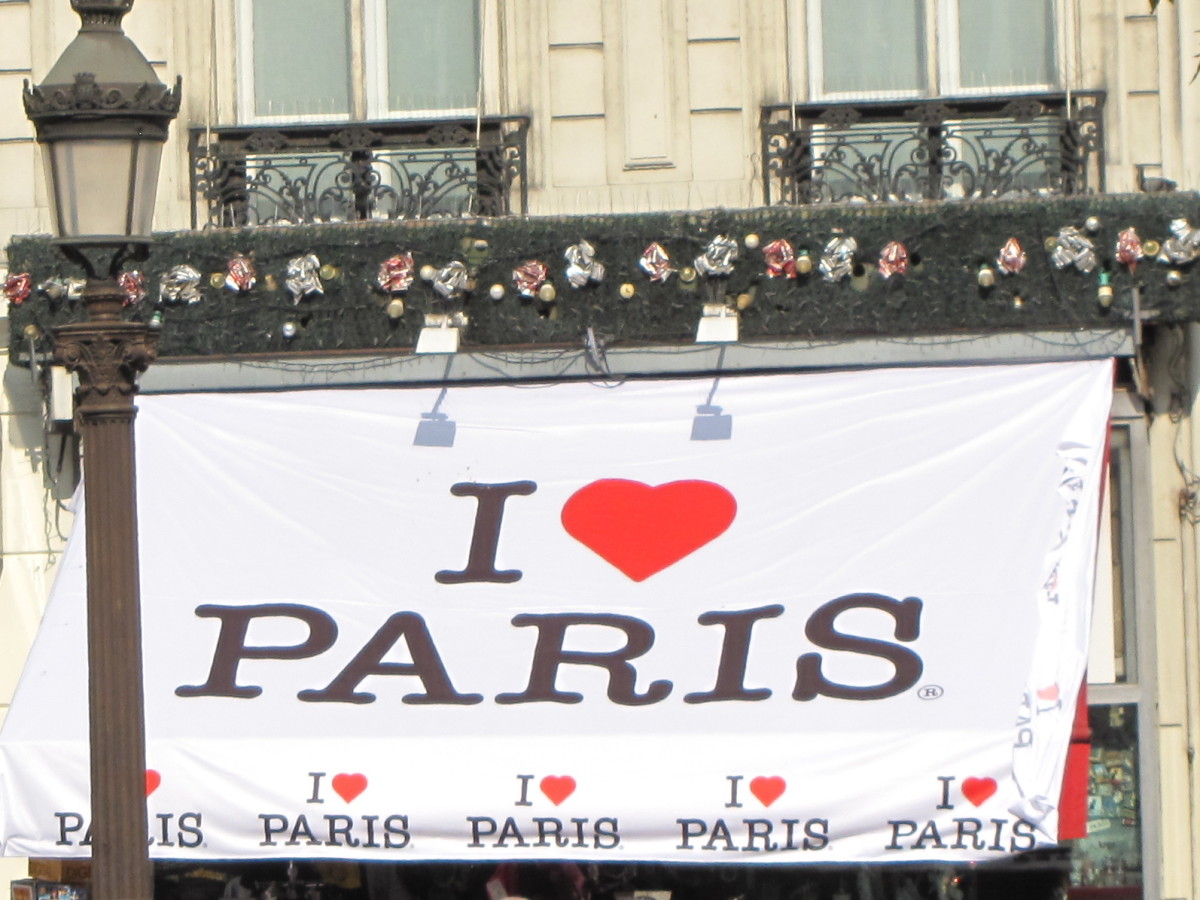Irish Round Towers and Stone Circles
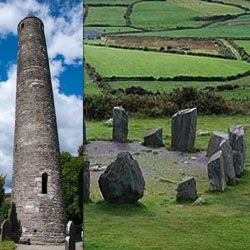
Round Towers and Stone Circles - What Were They For?
Whenever you see one of these majestic round towers or stone circles, whether in Ireland or elsewhere in the British Isles, ones first thoughts are, "what were they built for, and how did they do it?"
There were about a hundred and twenty round towers in Ireland, and the number in existence today is between fifty and seventy, some in a poorer state than others. But when were they built, by whom and what for? Answers to these questions are still being discovered by archeologists to this day.
Living in Ireland, with its rich ancient history, where age and culture play their roles, I find myself often delving into the past searching for something or other. It's fascinating stuff, and you don't only have to be interested in structures to admire all things ancient. I'm in awe at the quality of the craftsmanship of the day - just like that in ancient Egypt or Peru, where the construction projects were not only massive, but also involved a vast amount of knowledge, skill and implementation.
Contrary to public opinion, ancient peoples weren't too uncivilized, apart from their warring ways, they were clever and industrious.
Created on 28 April 2013
All photos © Rob Hemphill except those otherwise credited
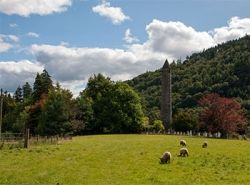
Irish Round Towers
...or Bell Houses
It's unclear when the towers were built, but it's estimated that it was between the 9th and the 12th centuries. As many as 120 examples may have existed; but most are now in ruins while about twenty of them are virtually perfect, after all this time!
The height of the present-day towers range from 59 ft (18 m) to 130 ft (40 m), whilst the circumference is from 39 ft (12 m) to 59 ft (18 m). Kilmacduagh is the highest of the surviving towers in Ireland, and it's leaning 5 ft 7 in (1.7 metres) from the perpendicular.
The type of stone used in building the towers depends entirely on the era of construction. The oldest examples used what material was available at the time, notably that of an uncut rubble. As time progressed, the build improved by becoming more detailed and using neatly cut stone work. The base portion is built of solid stone all round with a single narrow door raised about 10 ft (3 m) above it, and the entrance often would only be accessible by ladder. Above this inside some of the towers, there's evidence of their being two or more floors, which could have been made of wood in which ladders would have been used. Windows were only narrow slits in the stonework, and the conical roof or cap was also made out of stone. A circle of battlements that adorns some later towers would have been added to much later.
A list of all Irish round towers on Wikipedia
The Round Tower, Glendalough, Co.Wicklow
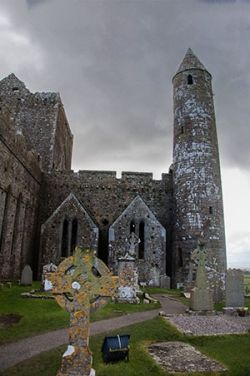
What Was The Purpose of Round Towers?
Popular hypothesis
It was not clear what purpose the towers had until fairly recently. The common hypothesis was that these towers were part of a fortress system or redoubt against raiders like the Vikings. They probably stored religious artifacts and relics along with other valuables of the time. Therefore, if an invading force was spotted by a lookout high in the tower, the clerics could guard their own people by entering, climbing the ladder inside and pulling it up after them.
The main issue with this hypothesis is that several towers were built in locations not ideally suited to surveillance from a height as they are situated in valleys or by rivers, all low lying. Intruders would have actually had a considerable advantage attacking from above.
Wooden entrance doors, no matter how thick, could have been burnt down causing the smoke to rise upwards through the tower, in effect smoking out the inhabitants and suffocating them. Records do exist of people having been burnt to death inside round towers.
Structural Integrity
By building a round shape, these towers have been able to withstand high winds and gales throughout the ages. Having adequate foundations didn't seem important at the time as some are built onto soil packed with stones while one tower at Monasterboice has a foundation of a mere two feet (60 cm). How they have stood for so long is extraordinary.
It seems the main reason for the round tower was to act as a belfry, and so imitating the style of bell towers throughout Europe. The Irish word 'cloigtheach' literally means bell house. These round towers were the only important stone buildings in the island of Ireland before the Normans arrived in 1167 AD.
The Rock of Cashel, Co.Tipperary
The Irish Round Tower

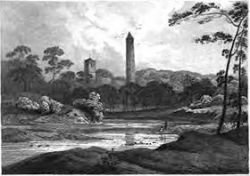
Clondalkin
8th century round tower
The round tower in Clondalkin, County Dublin was built around 700 AD and is thought to be one of the oldest towers in the country. It's particularly well preserved and even has its original cap. Founded as a monastic settlement over 1,400 years ago, in the 8th century notable gospel manuscripts, such as the Clondalkin mass book were produced - this is now in Germany on display.
The monastery was burned to the ground by the Vikings, and the area was under their control until the famous Battle of Clontarf in 1014 when they were defeated by Brian Boru. Further fighting continued during the Norman invasion in 1171, then reignited again in the mid 17th century with the Rebellion of 1641.
Read more about Clondalkin.
Image credit: View from 1820 of the Round Tower, Clondalkin, Co. Dublin on Wikipedia
Ardmore Round Tower
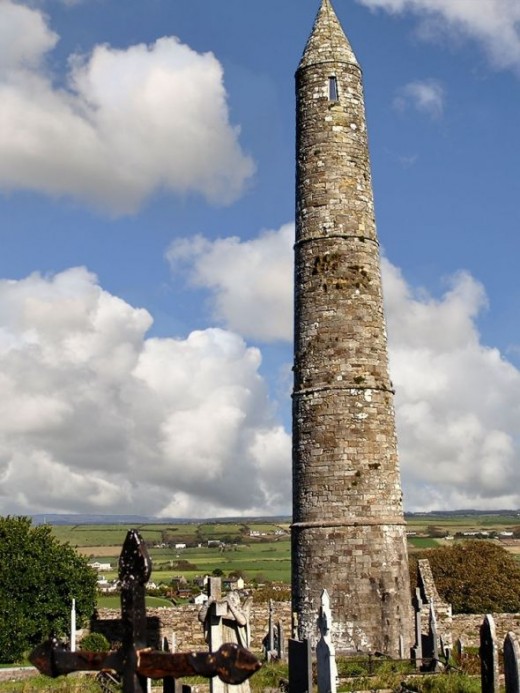
Ardmore Round Tower
Ardmore is presumed to have been founded in the 5th century by St. Declan, this predates even St. Patrick. The round tower could originate from the 12th century, but experts suggest that it's possible to have been a 10th century construction.
Round Tower Glendalough
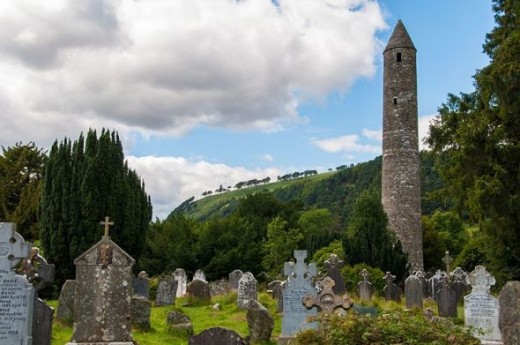
Round Tower, Glendalough
The pretty area of Glendalough, which means "glen of two lakes" in County Wicklow is famous for its Early Medieval monastic settlement which was founded by a hermit priest, St Kevin in the 6th century. It was partly destroyed by English troops in 1398.
Read more about the Round Tower at Glendalough.
St Kevins Glendalough
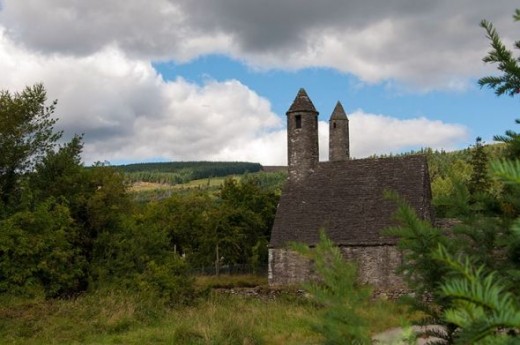
St. Kevin's Church, Glendalough
How the church was constructed
~ This small building is built with a stone roof and originally only had a nave, with an entrance at the western end and a small half-rounded window in the eastern gable.
~ The steep sloped roof, formed by the overlapping of stones, is supported by a semi-circular vault inside.
~ There was an access to the roof chamber through an opening in the vault.
~ The first floor of the church was made of timber.
~ The belfry is at the western end and rises in the form of a very small round tower with its conical cap and four small windows.
Been To or Seen a Round Tower in Ireland?
Have you seen or been to a round tower in Ireland?
Devenish Round Tower
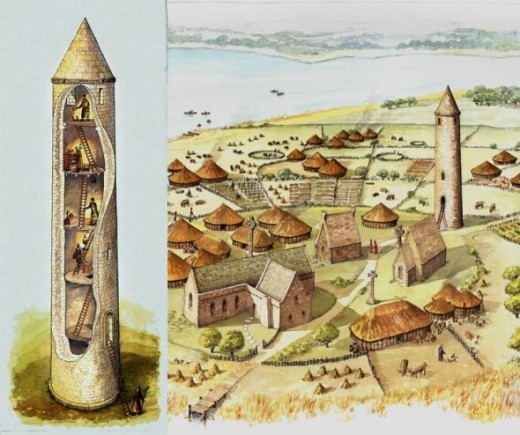
The Round Tower, Devenish, Co Fermanagh
The round tower at Devenish, located about 2 miles north of Eniskillen on Lower Lough Erne, is one of Northern Ireland's finest monastic sites. With a height of 100 ft (30 m) and diameter of just 16 ft (4.8 m), this tower is one of just three round towers still with its floors and ladders intact so enabling the public complete access.
It was founded in the 6th century by St Laisren, who was also known as St Molaise and was built on a pilgrimage route towards Croagh Patrick in Co.Mayo. The tower is adorned with 12th century Romanesque features, one of which includes an unusual beaded cornice around the top of the tower. Located just below the conical stone roof, the cornice is interspersed with intricate head sculptures above the windows (the detail of this can be seen in the illustration below).
The site became a centre of learning but suffered under the Vikings in 837 AD and was burned in 1157 AD. It later flourished as the site of St Mary's Augustinian Priory and the parish church. Near to the round tower, foundations of a second tower is evident, and it's thought that the present tower may have superseded it.
Image: © Crown copyright. Reproduced with the permission of the Controller of HMSO.
Artwork by Philip Armstrong
Use of the images with thanks to the Northern Ireland Environment Agency
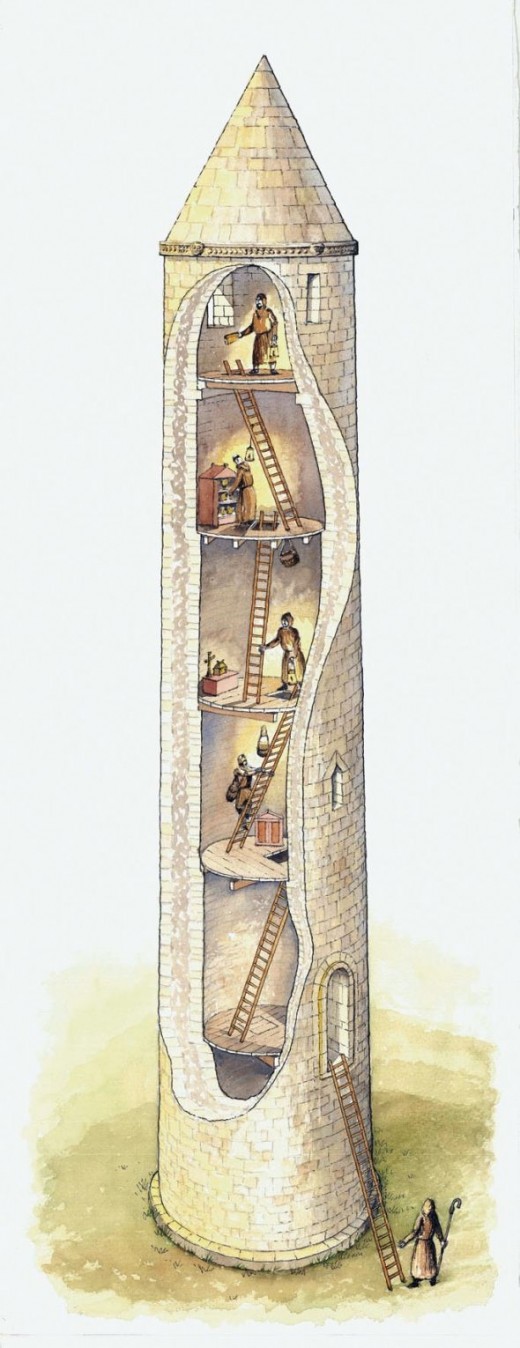
The Round Tower, Devenish, Co Fermanagh
Images: © Crown copyright. Reproduced with the permission of the Controller of HMSO.
Artwork by Philip Armstrong
Use of the image with thanks to the Northern Ireland Environment Agency
Further Info on Irish Round Towers
- Tower, Belfry and Church in Swords, Co. Dublin
A fascinating visual history of Swords, including the tower, belfry and church from the 6th century to today. - Watercolor Painting of Kilree Round Tower
A simple and beautiful pen and wash watercolour painting by John Duggan of Kilree Round Tower in Kells Co. Kilkenny Ireland.
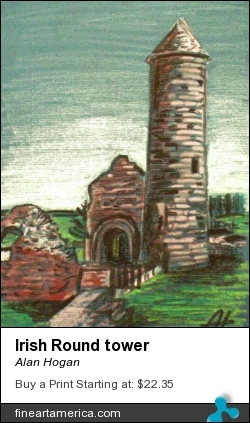
Pastel Drawing of an Irish Round Tower
I came across this delightful oil pastel drawing by Alan Hogan on FineArtAmerica.com, which features the ruins of an Irish chapel and round tower.
As the artist quite rightly says in his description, that of the many ancient buildings in Ireland, a large number were pillaged and destroyed by the Vikings. So much destruction has continued through the ages, and even today large old properties are continually being neglected and allowed to ruin.
Irish Stone Circles

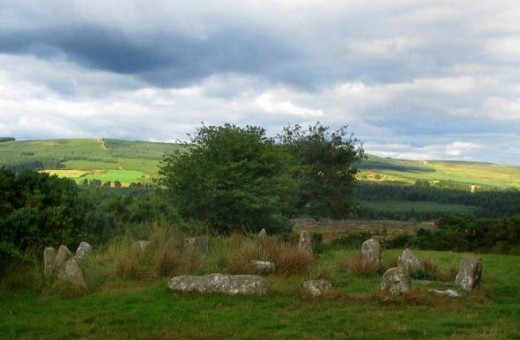
Carrigagulla Stone Circle near Ballinagree in Co.Cork
Image from Wikimedia Commons
Stone Circles
Stone circles are standing stone monuments organized in a circle of any diameter and any number of stones. There is evidence of the construction of these monuments all over the world and throughout history. But, do we know what they were really for?
Not Just a Pile of Stones
The circles range in size from smaller clusters of four or five stones to complete megalithic rings, and what they have in common is of being a sacred place. There is archaeological evidence that these places were not only used as burial grounds, but also may have been connected to various agricultural happenings, like the summer solstice.
No one knows exactly why these circles were built, but we do know that many were aligned with the moon and sun, and so made up a sort of complex prehistoric calendar. These ancient peoples had a thorough understanding of geometry and engineering, and their skills at astronomy allowed them to construct these early types of observatory. So no matter what we think, they were not
the uncivilized and primitive peoples we often imagine.
Where Are The Circles and What Are They For?
Stone circles exist all over the world, but most are to be found in Europe with a number of these in Great Britain and Ireland. Many of the circles that were erected in the British Isles are still in existence today, with probably the most famous of all being Stonehenge in Wiltshire, England. However, in Ireland, the number of stone circles is smaller, and the range stretches from those throughout Northern Ireland, down the east coast and around Dublin, across the south to a large number in the West Cork and Kerry areas. Of those found in France, in the Alps, the locals refer to them as "mairu-baratz", or "pagan garden".
In some places, stones may be found lying on their sides and not upright, these are generally referred to as being recumbent stone circles.
Books About Stone Circles in Ireland

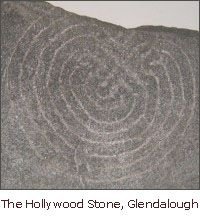
The Hollywood Stone
Labyrinthian circles
In 1908, a group of men who were hunting for ferrets, discovered a large stone lying face down in the grassy lane near Hollywood in Co. Wicklow, this stone became known as The Hollywood Stone. It's a sizable piece of rock and measures about 4 ft (1.2 m) high, by 3 ft (0.9 m) wide, by 2 ft 7 in (0.8m) thick.
It has a labyrinthian design carved into the rock measuring approximately 2 ft 4 in (70cm) in diameter, but a small part of the design is missing. It's not known what the stone's purpose was, but it's most likely that it had a connection to the Glendalough Pilgrimage. It could have been a special marker on the road near St.Kevin's church to show pilgrims the way - an elaborate sign post of its day!
At one time, it was considered that taking two pilgrimages to Glendalough was the equivalent of taking one to Jerusalem. But, in much later times, the odds had changed, and now it was seven Glendalough pilgrimages equaled one Jerusalem pilgrimage.
Image credit: Labyrinthireland.com

Grange Stone Circle
In Co. Limerick
The Grange stone circle is to be found near Lough Gur in County Limerick about 3 miles from the village of Bruff.
It's astonishing to think that this place has been inhabited for at least 5,500 years since the arrival of early Neolithic people and the site represents an insight into each of the different ages. It begins in the Stone Age with its megalithic tomb, through to the Bronze Age period with the Grange Stone Circle and hill forts. Next came the Early Christian Period and Medieval Period with the Bouchiers and Black Castles. And finally, the Post-medieval Period with the New Church, Mass Rock and Lime Kiln as well as St. Patrick's Well.
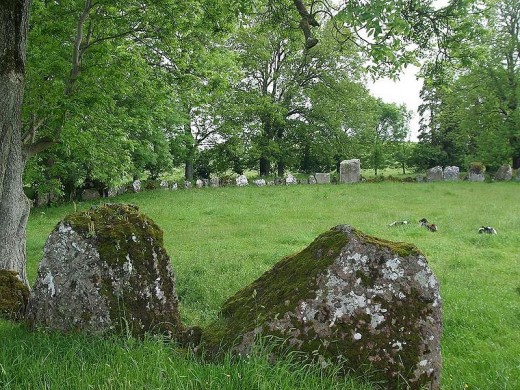
A Guide to the Stone Circles
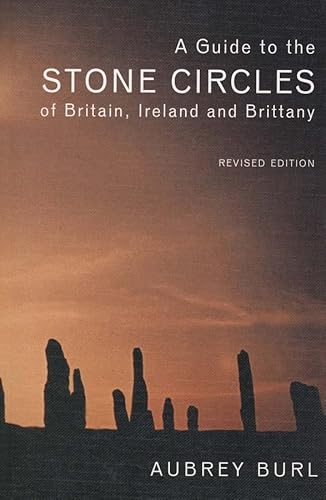
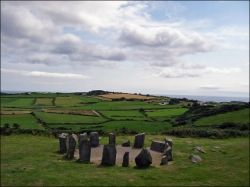
Drombeg Stone Circle
In Co. Cork
Drombeg stone circle or The Druid's Altar as it's also known as is a recumbent stone circle located one and a half miles east of Glandore in County Cork. It's a protected monument and is one of the most visited of all megalithic sites in Ireland. The area inside the 30 ft diameter circle is now covered in gravel to protect it from the pounding feet of visitors.
Like many other similar monuments, the axis of the circle runs north-east to south-west, and so attaining a sunset alignment in mid-winter or the winter-solstice. There are seventeen closely spaced stones spanning the 30 ft diameter, of which 13 have survived.
A certain amount of symmetry is to be expected in the design of stone circles, but with Drombeg it's very noticeable, which suggests that this was highly important to the ritual function therein. In 1957, the site was excavated, and a young persons cremated remains were found in an earthenware urn which had been buried in a central pit.
It's very possible that an already existing Bronze Age monument was adopted by the Celtic folk for ceremonial purposes, in which case the burial could have been dedicatory. An Iron Age domestic site a short distance to the west of the circle consists of hut foundations as well as a communal cooking pit and hearth. The two could be connected in some way, and it's quite likely that they were but is unknown.
More on the Drombeg Stone Circle
Image credit: Aaro Koskinen
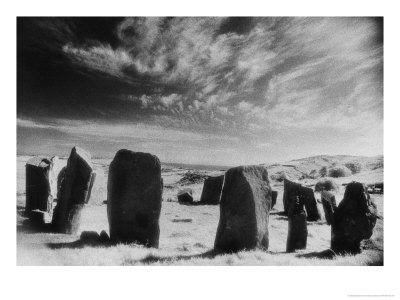
Drombeg Stone Circle, County Cork, Ireland
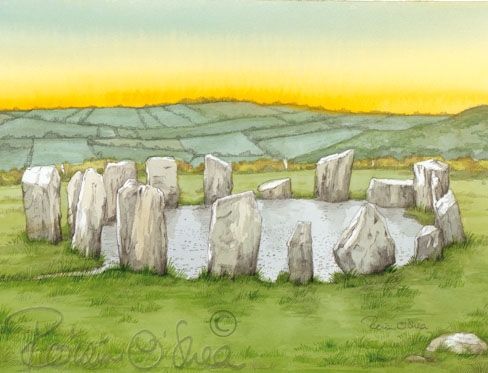
Drombeg Stone Circle Co. Cork
Painting: © Roisin O' Shea 2009 www.roisinoshea.com
Consent given to use image
Myths of Ireland
Visited a Stone Circle?
Have you ever visited a stone circle before?
More on Irish Stone Circles
- Megalithic Ireland
A comprehensive site with information about most megalithic sites in Ireland. RECOMMENDED. - Irish Prehistoric Architecture - Stone Circles
Anthony Weir talks about stone circles with accompanying photographs. Also plenty of information on standing stones and different tomb structures. - Stone Circles In Ireland
Stone Circles are fairly common throughout both Northern and Southern Ireland and represent Ireland's Celtic Heritage before the growth of Christianity. - Beaghmore
Beaghmore is a complex of early Bronze Age megalithic stone circles and cairns, 8 miles north west of Cookstown in County Tyrone, Northern Ireland - Megalithomania
An interesting site as they call it, The Home of Irish Prehistory. - Lettergorman Stone Circle
The five stone circle at Lettergorman consists of thin slabs like stones, some lying flat on the ground. There's also a rather extraordinary looking tree on one side. - Marnelle's Art Blog
There are a few lovely Stone Circle paintings on this site.
You'll Need a Map




